On September 14, 2011, after months of delay to allow for budget reviews, NASA formally announced its Space Launch System (SLS) plans. The design, devised to meet the requirements of the U.S. Congress 2010 NASA Authorization Act, was similar to NASA’s SLS “reference vehicle” design described months ago. As described, however, SLS differs in several key details from earlier concepts.
A key decision, reportedly made by Administrator Bolden himself, was to use five segment PBAN solid rocket boosters and a stretched core for both the initial 70 tonne to low earth orbit (LEO) SLS and for the ultimate, 130 tonne to LEO SLS, eliminating the cost of developing what would have been essentially two different rockets. With his decision, Bolden rejected a proposal to use four segment boosters and a shorter core for the 70 tonne rocket.

A second decision was to compete the boosters from the outset. Although ATK’s five-segment boosters, developed for the cancelled Ares program, will be used for early SLS flights, future boosters, either solid or liquid, will be determined by a development contract competition.
Bolden’s first choice means that the 70 tonne “Block 1” SLS will fly with partially empty propellant tanks and only three, rather than the ultimate five RS-25D/E (Space Shuttle Main Engine-derived) engines on the core.
The core tanks will be loaded perhaps 160 to 180 tonnes short of their roughly 1,000 tonne capacity on the interim SLS (the larger reduction would result in STS equivalent propellant loading). Even with that mass reduction, the core thrust to weight ratio will be less than 1.0 when the solids drop away, sacrificing potential performance to gravity losses.
“Block 1” will launch Orion/Multipurpose Crew Vehicle (MPCV) spacecraft on developmental missions. An initial “SLS-1” unmanned test flight could occur at the end of 2017. The second “SLS-2” launch would carry crew, but would not occur until the end of 2021.
The flights would use RS-25D engines from the existing Space Shuttle Main Engine (SSME) inventory and solid rocket motors using existing solid booster casings. The core will be 8.4 meters in diameter, allowing use of existing Shuttle External Tank infrastructure, if not tooling.
Block 1 SLS on Launch Pad. Actual SLS Vehicles will not be Painted White.
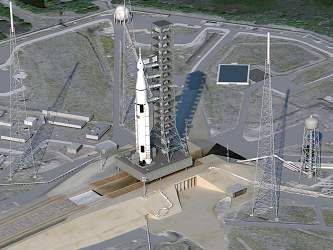
The rocket will weigh about 2,495 tonnes at liftoff and will rise on about 3,810 tonnes of liftoff thrust, about 545 tonnes of which will be provided by the three SSMEs (assuming 104.5% throttling). It will stand about 97.6 meters to the top of the MPCV launch escape system tower.
The solid booster pair will together weigh about 1,464 tonnes, including about 1,253 tonnes of propellant. The core might weigh 910 tonnes and be loaded with about 820 tonnes of liquid hydrogen and liquid oxygen propellant.
A “Block 1A” variant would be possible if two engines were added to the core, creating a five RS-25 engine core, and if no upper stage was used. This rocket’s core could be fully fueled, allowing it to lift at least 105 tonnes to LEO.
The addition of a J-2X powered upper stage to “Block 1A” would create “Block 2”, the ultimate SLS capable of lifting 130 tonnes to LEO or of accelerating about half as much mass to escape velocity. “Block 2” would be a “monster rocket”, weighing nearly 2,950 tonnes, standing nearly 122 meters, and producing about 4,173 tonnes of liftoff thrust.
NASA would budget about $18 billion to develop and fly the SLS-1 development mission. This would include about $10 billion to develop “Block 1”, $6 billion for Orion/MPCV, and $2 billion to create launch facilities and other infrastructure. SLS would fly from Kennedy Space Center, where it would be stacked in the Vehicle Assembly Building and launched from Launch Complex 39B. Program costs are expected to average $3 billion per year, but that budget would probably only support one SLS/Orion flight every two years.
NASA’s SLS mission is still to be determined. NASA has described a potential human mission to an asteroid by 2025, but no specific asteroid or mission plan has been selected. The Agency has mentioned that SLS could lay the groundwork for future human missions to Mars, but such missions appear to be decades distant at best.
Also read: NASA’s Space Launch System – Winners and Losers
Graphic of SLS Block 1A Launch Shows RS-25 Core Engine Pattern
The “Block 2” “Evolved” SLS appears to be a near carbon-copy of Vehicle 27.3, the recommended Cargo Launch Vehicle from NASA’s 2005 Exploration Architecture Systems Study (ESAS). The design is sometimes called “Ares V Classic”. Since 27.3 was capable of supporting human lunar landing missions, it must be presumed that SLS could also support lunar landing missions. NASA, however, stopped planning any such missions after the White House canceled Project Constellation in February 2010.
Author:
by Ed Kyle



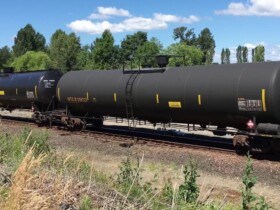



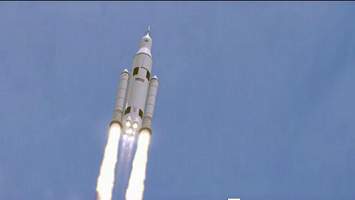






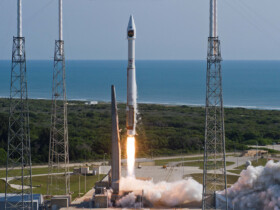
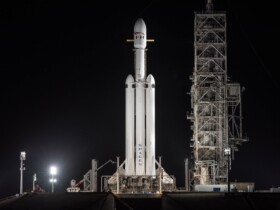
Got a Questions?
Find us on Socials or Contact us and we’ll get back to you as soon as possible.